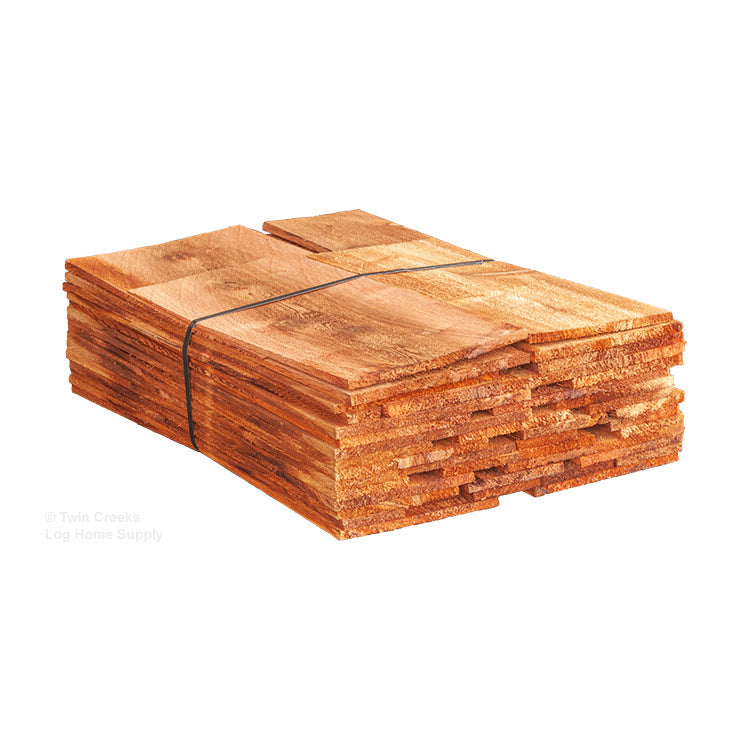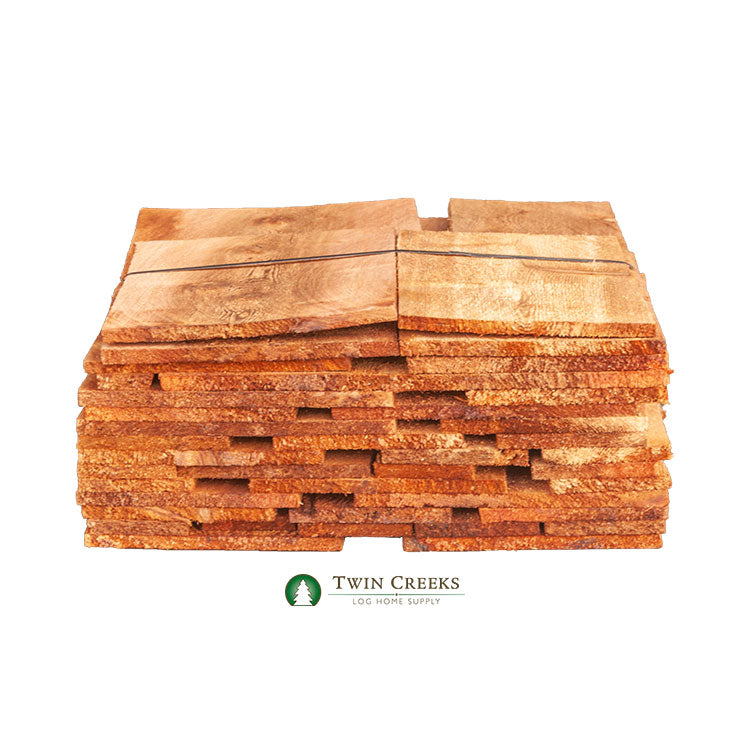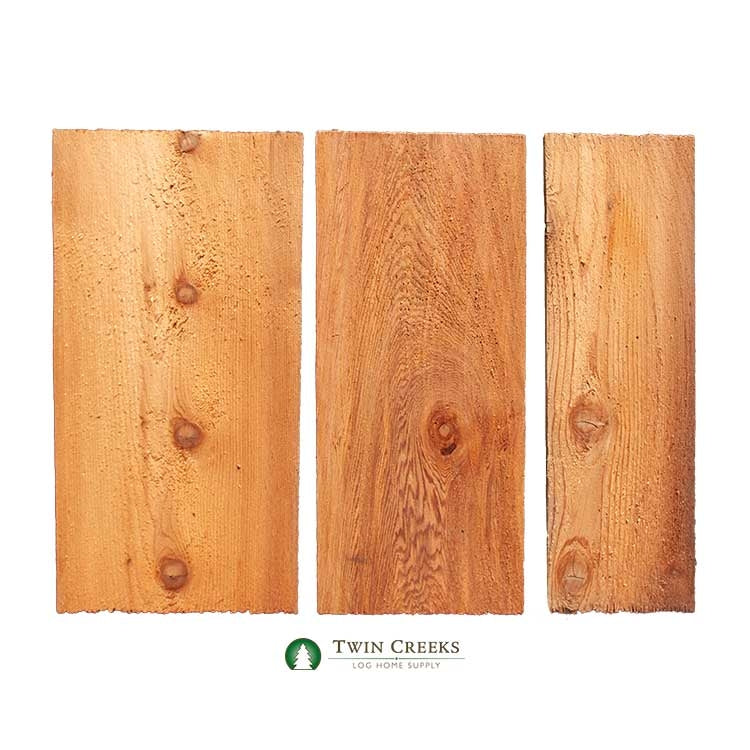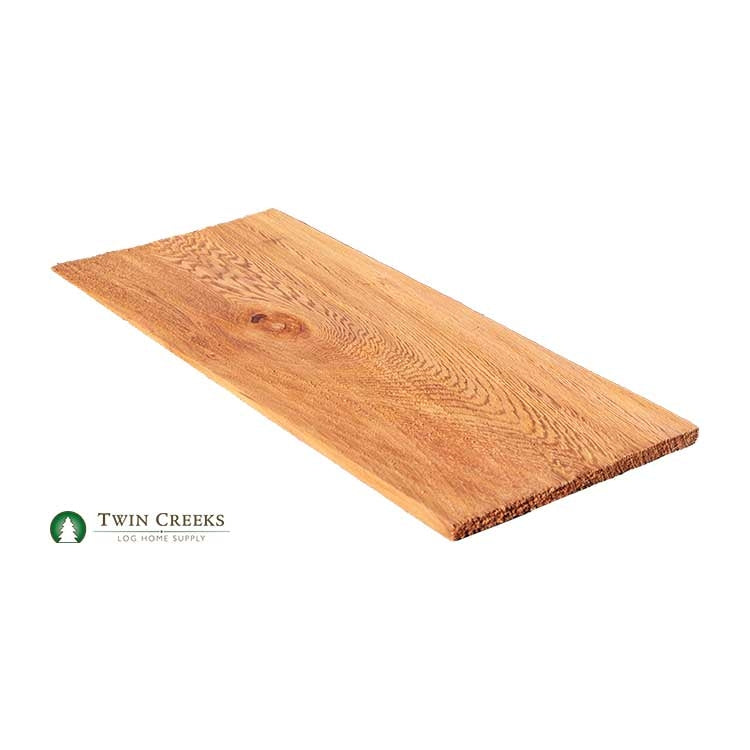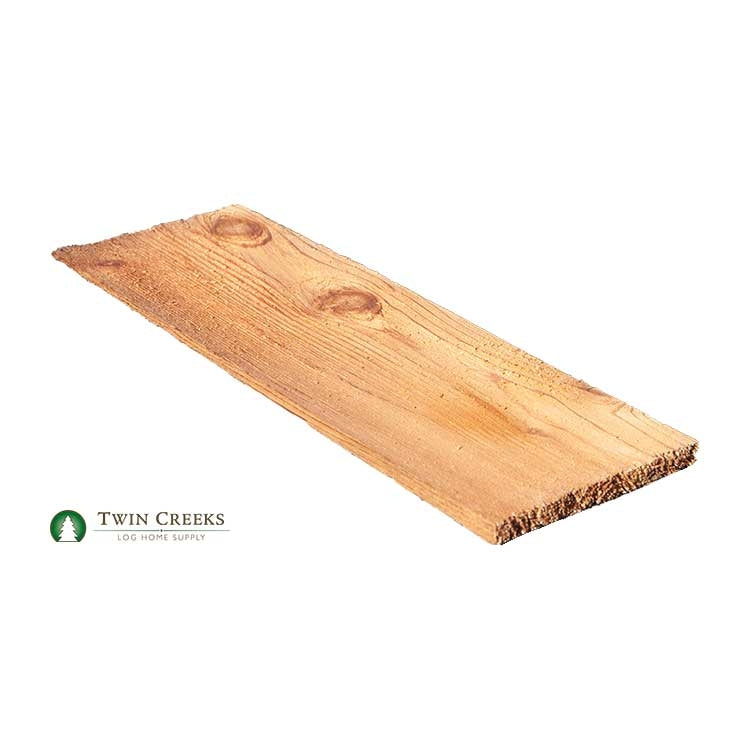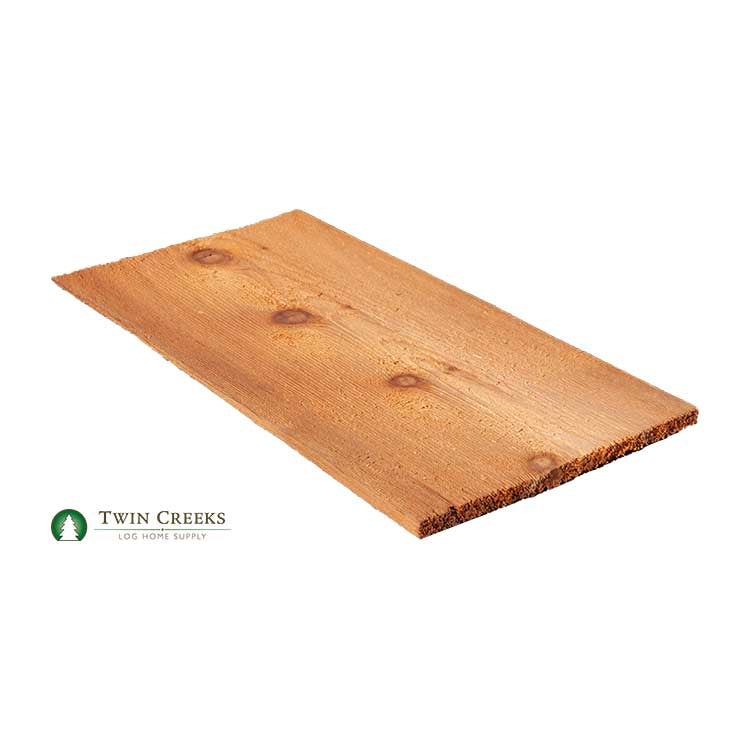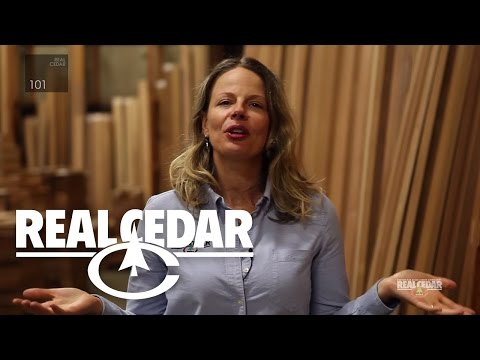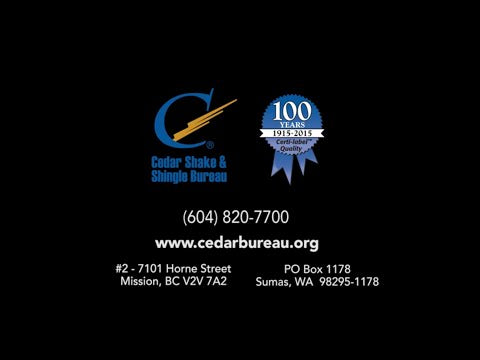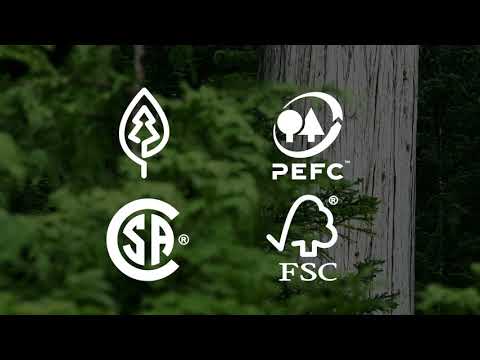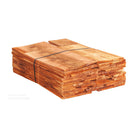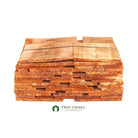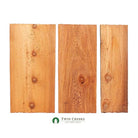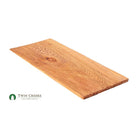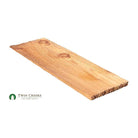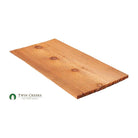Bundle #4 Grade 18" Perfection Western Red Cedar Shingles
Please call for a custom shipping quote if you need 10 or more bundles.
Details
#4 Grade 18” Perfection Western Red Cedar Undercourse Shingles are specifically milled as a utility-grade product intended for the undercoursing of Cedar Shingle siding. This product is not intended to be used as a roofing material. Instead, this product is ideal for starter course rows when using the single-course method of shingle installation. It is also perfect for standard undercoursing when using the double-course method.
Features & Benefits of Western Red Cedar Shingles:
• Extreme Durability – Cedar Shingles easily withstand harsh weather conditions including heavy wind, rain, and hail.
• Longevity – Western Red Cedar is known as one of the most durable softwoods. With proper maintenance, Cedar Shingles can beautify your home for decades.
• Energy Efficiency – Cedar offers excellent insulation for your home. While maintaining a low carbon footprint, Cedar will keep your house warmer during cold months, while allowing your home to breathe and stay cooler during the warmer months.
• Termite Resistance – Western Red Cedar is naturally resistant to termites.
• Ease of Installation - Cedar Shingles are simple to install and come pre-bundled for easy jobsite transport.
• Versatility – Western Red Cedar Shingles can be used with many different architectural styles, affording you the option of a home covered in beautiful Cedar wood, or simply a small rustic accent area on an otherwise traditional home.
• Adaptability – Cedar Shingles are manufactured to be used on both interior and exterior wall surfaces.
Product Specifications:
• Packaging: This product is packaged as a standard "roofer bundle" bound with a plastic or metal strap.
• Length: 18" (Perfection)
• Grade: #4 Grade. Unlimited flat grain, sapwood and defects. Holes in the shingles are allowed.
• Texture: Natural (light rough texture)
• Thickness: 5/2-1/4" (5 shingle “butts” stacked together should measure 2 ¼” thick)
• Width: 17" maximum exposure, 2 1/2" minimum exposure
• Estimating: When used as a starter row, a bundle of #4 Shingles should yield 32 running feet of coverage. When used as the backing layer in a double-coursed siding, figure 2 bundles per square of coverage.
Product Resources:
Cedar Shake and Shingle Product Selection Guide
Cedar Shake and Shingle Specification Guide
Basics Guide for Cedar Shakes and Shingles
CSSB Exterior and Interior Wall Manual
Estimating Cedar Shingles:
Please ensure you have the following information when estimating wall coverage for cedar shingles:
1. Size in square feet of the wall area you are trying to cover.
2. Application and exposure to be used.
3. Product type used.
4. Amount of product in each box or bundle.
Specifications
More Information
|
Additional Technical Resources for 18” Perfection Western Red Cedar Shingles: Application Notes: Finishing Cedar Shingles: Nails: Staples: |
Reviews
Product Questions
Product Questions
-
Can I use #4 Grade cedar shingles on a roof?
Western red cedar #4 shingles are used on the roof or house sidewalls as a starter course only and is not used as a roofing shingle.
-
Are these shingles tapered? And is the butt thickness 3/8 of an inch?
Yes, the #4's are tapered. They are officially sized at 5 / 2-1/4", which means that 5 butt ends stacked together should measure 2 1/4" tall. We've found them to average 7/16" thick at the butt end.
-
What is indicated with "Perfection" in the name?
Perfection just indicates that the shingle is 18" long. Other cedar shingle sizes have similar nicknames: 16" shingles are also referred to as "Fivex" shingles and 24" shingles are also referred to as "Royals".
-
How many square feet does one cover?
Because the #4 Grade Shingles have a rougher appearance than higher grades such as #2 and #1, they are primarily intended to be used as an undercourse.
Some plans call for fastening two layers of shingles to the wall. This is called Double Coursing. Under these conditions, you can save money by using the lower cost #4 shingles as the first layer and then attaching a higher grade shingle on the outer layer.
When used as an undercourse layer, it is typically more useful to measure it in terms of running footage in a row rather than in square footage of coverage. When laid side-to-side this way, the #4 shingles average 32 running feet per bundle.
| Product Details | |
|---|---|
Grade |
|
Shingle Length |
|
Thickness Average thickness of shingle/shake at the butt (bottom) end
|
|
Width |
|
| Installation Details | |
Application Type |
|
Standard Sizing |
|
Exposure - Sidewall Refers to options on the length of the shake that can be exposed to the weather. Wider exposures yield more square feet of coverage per bundle.
|
|
Fastener - Sidewall |
|

